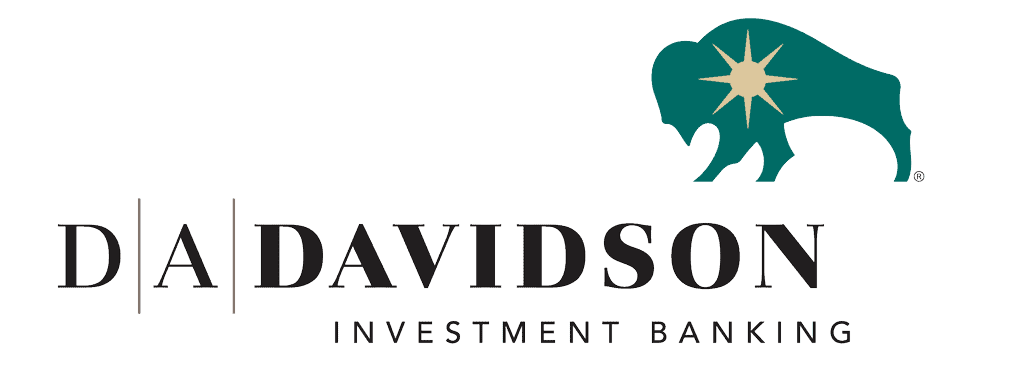
Bank M&A Coming Out of Covid-19
Brought to you by D.A. Davidson

As of this writing, 2020 is on pace for approximately 110 transactions – matching 2009 as the slowest year for bank deal activity in the last 30 years. This is approximately a 45% decrease in M&A volume from recent years, given the average of 250 transactions a year in each of the last five years. But the prospects for increased bank M&A in 2021 are good; the factors driving industry consolidation are not going away.
The prevailing public trading value for banks is an excellent indicator for M&A pricing. As bank currencies increase in value, M&A values increase as well – the converse also being true. In the first nine months of 2020, bank stocks saw steep declines and significant underperformance compared to the broader equity market; banks were the second-worst performing industry sector in the S&P 500, behind energy.
The discounted valuations reflected the multitude of challenges that face banks, such as narrowing net interest margins and slowing loan growth. The discounted valuations and expected credit quality deterioration were the primary drivers behind 2020’s M&A slowdown. October and November saw a significant rally in bank stocks, reflecting hopes for stability following the election, optimism regarding the distribution of an effective vaccine anticipation of an improved economy and a credit environment with fewer losses than feared.
Slowdown, Not a Standstill
The slowdown in activity doesn’t mean banks have abandoned M&A as an important growth strategy. When downturns and recessions happen, predictably M&A slows until parties can establish a new lower pricing equilibrium. Discussions are happening now – even increasing in some markets – as bankers wisely use this time to continue or initiate strategic conversations.
Both buyers and sellers understand the need to maintain market discipline more than ever. Deal announcements picked up in the last several months; the 16 announcements in September made it the busiest month for M&A since the pandemic began.
What Drives Deals Going Forward
Below are some of the factors that will drive bank M&A activity in 2021.
NIM Compression: Low or compressing NIMs are a stark reality, as “lower for longer” rates will continue until the end of 2023.
Operational Scale: If there is one truism in banking, the need to become more efficient is a constant. Banks will continue using M&A to scale their franchises and spread expenses over a larger asset base.
Lack of Loan Growth: The coronavirus pandemic brought the industry’s formerly robust loan growth to a halt. With the exception of mortgage activity, Paycheck Protection Program loans and businesses that cater to the stay-at-home economy, few are looking to expand, and many are in cost-cutting mode.
Pent-Up Demand: Many buyers and sellers pressed pause at the onset of the coronavirus to focus internally. Anecdotally, we are hearing more discussions as buyers and sellers come off the sidelines.
Technology: The pandemic has underlined the importance of technology in a remote environment. Advancements will continue disrupting the traditional banking model.
Succession Planning or Lack Thereof: Often the No. 1 factor leading to M&A activity.
Motivated Sellers and Buyers
As markets recover over the next six to 12 months, we are likely to see three types of transactions: distressed, fatigued and mergers-of-equals. There will be banks adversely impacted by credit quality that need a buyer due to a deteriorating situation. There are also boards and management teams that did not plan on operating through another crisis and may decide it is better to sell than continue to compete independently. Finally, there are banks that will identify opportunities to create a stronger and more valuable company via a merger-of-equals. These can be highly attractive for both parties, and we are likely to hear more talk of double dips. In a lower-premium environment, the market is more receptive to mergers-of-equals.
We feel that astute management teams will actively explore M&A opportunities, while taking a very thorough and cautious approach to credit due diligence. Lower valuations mean there will rightfully be a lot of discussion about the value of a buyer’s currency and the reinvestment opportunity for selling shareholders.
Sellers make the biggest investment decision of their bank’s life cycle when they agree to a transaction involving stock. While the nominal values of transactions in 2021 may be lower than in 2019, exchange ratios may well be higher than they were pre-pandemic – meaning long-term value may be even greater as buyers’ stock prices recover in 2021 and beyond.


